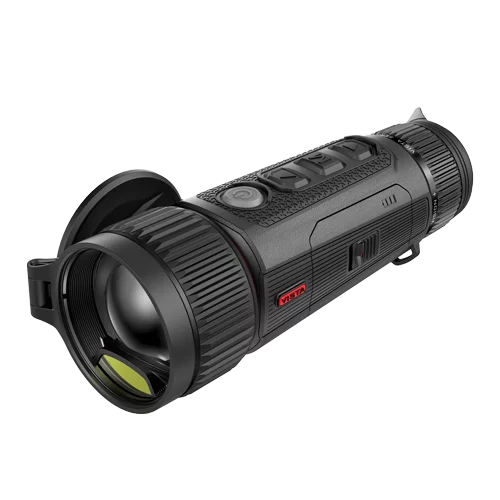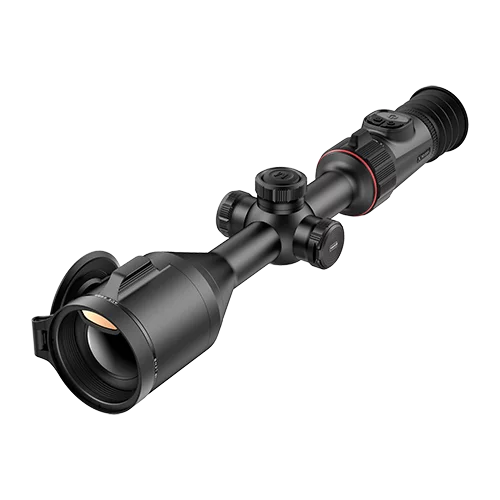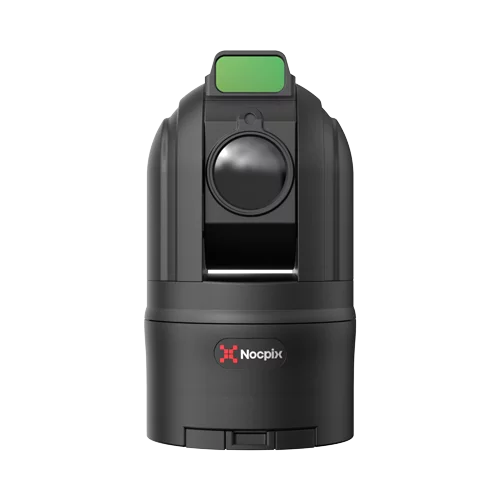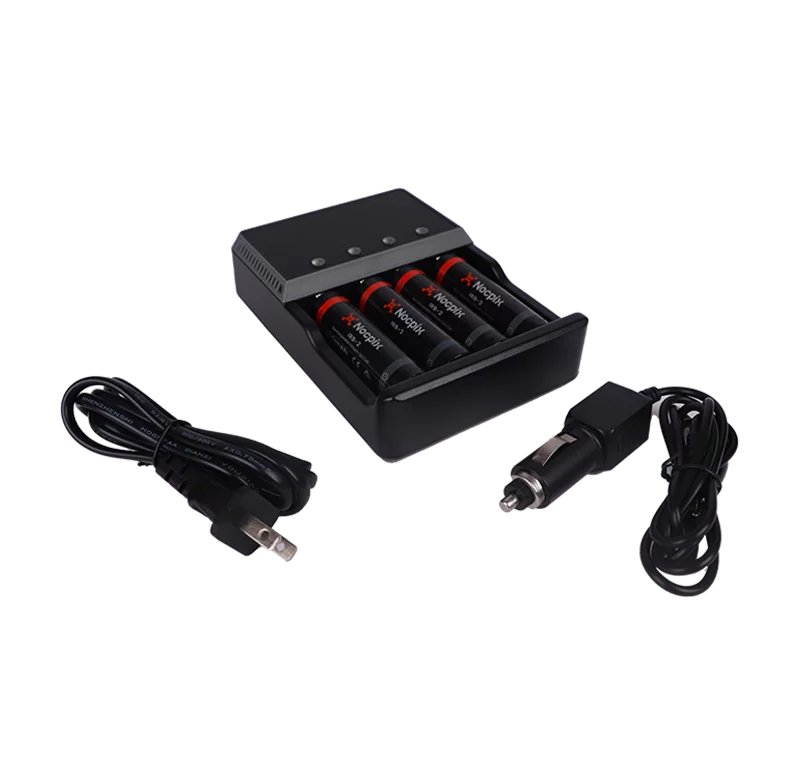When choosing a thermal imaging device, many users assume that a higher base magnification automatically leads to a smaller field of view (FOV). This belief is mainly influenced by traditional optical devices, such as daylight binoculars. However, in thermal imaging devices, these two parameters are independent and do not have a direct causal relationship.
What Is Field of View (FOV)?
The field of view determines the observable area through the thermal device. Its size is primarily influenced by:
Detector size – With the same focal length, a larger detector results in a wider field of view.
Lens Focal Length – With the same detector size, a smaller focal length leads to a larger field of view.
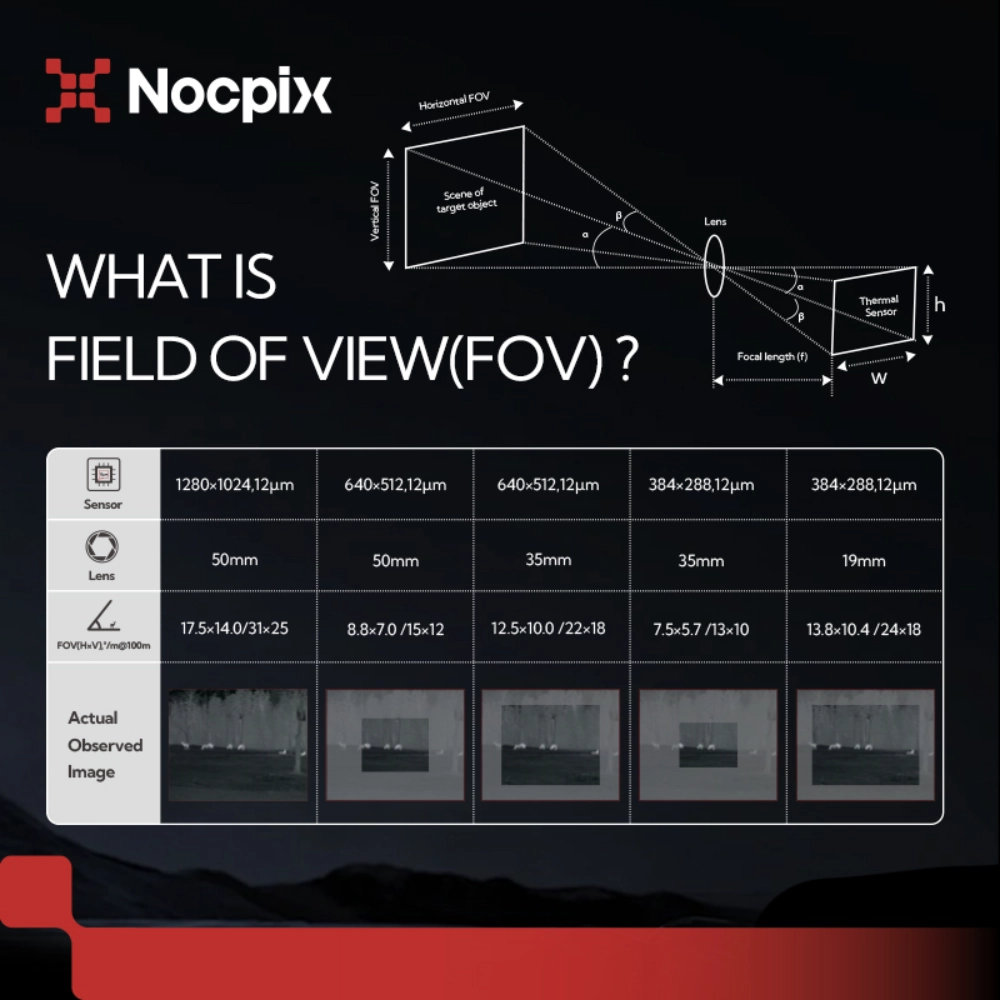
What Is Base Magnification?
Base magnification refers to how much an object is enlarged when viewed through the thermal device compared to the naked eye. The calculation formula is as follows:
Г = tanα (eyepiece) / tanα (object) = (display size / eyepiece focal length) / (detector image size / objective lens focal length)
From this formula, it is evident that base magnification is influenced by the detector, lens focal length, display size, and eyepiece.
- Display Size – Think of it like watching the same content on a 55-inch or an 85-inch TV. The content stays the same, but the larger screen makes the image appear bigger, resulting in a bigger base magnification.
- Eyepiece – This is similar to using a magnifying glass. A higher eyepiece magnification makes the image appear larger, increasing base magnification, but it doesn’t impact the field of view.
So, even if your device has the same 640-resolution detector and 50mm lens, the FOV stays the same. However, a larger display or stronger eyepiece magnification results in a bigger base magnification, delivering a much more immersive viewing experience!
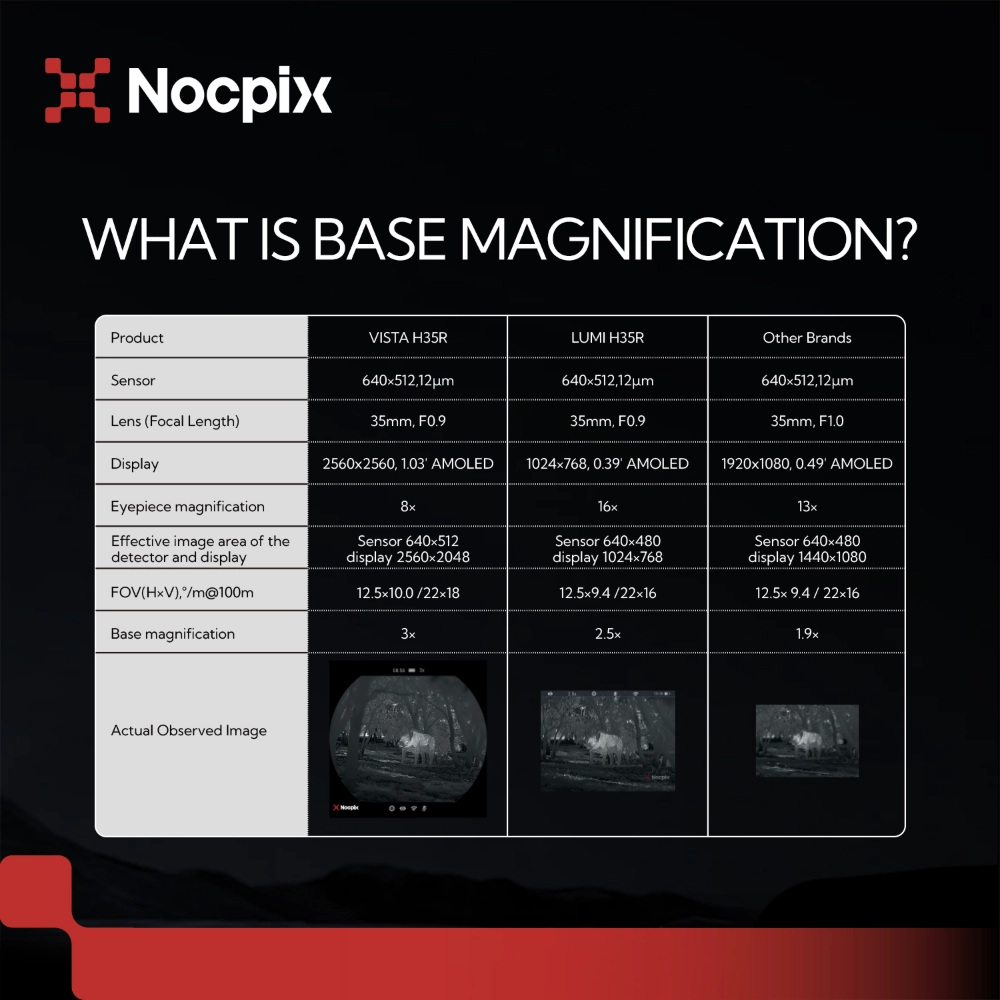
Note: Due to differences in display aspect ratios, products with the same detector and lens specifications may have slight variations in actual field of view.
Common Questions About Field of View and Base Magnification
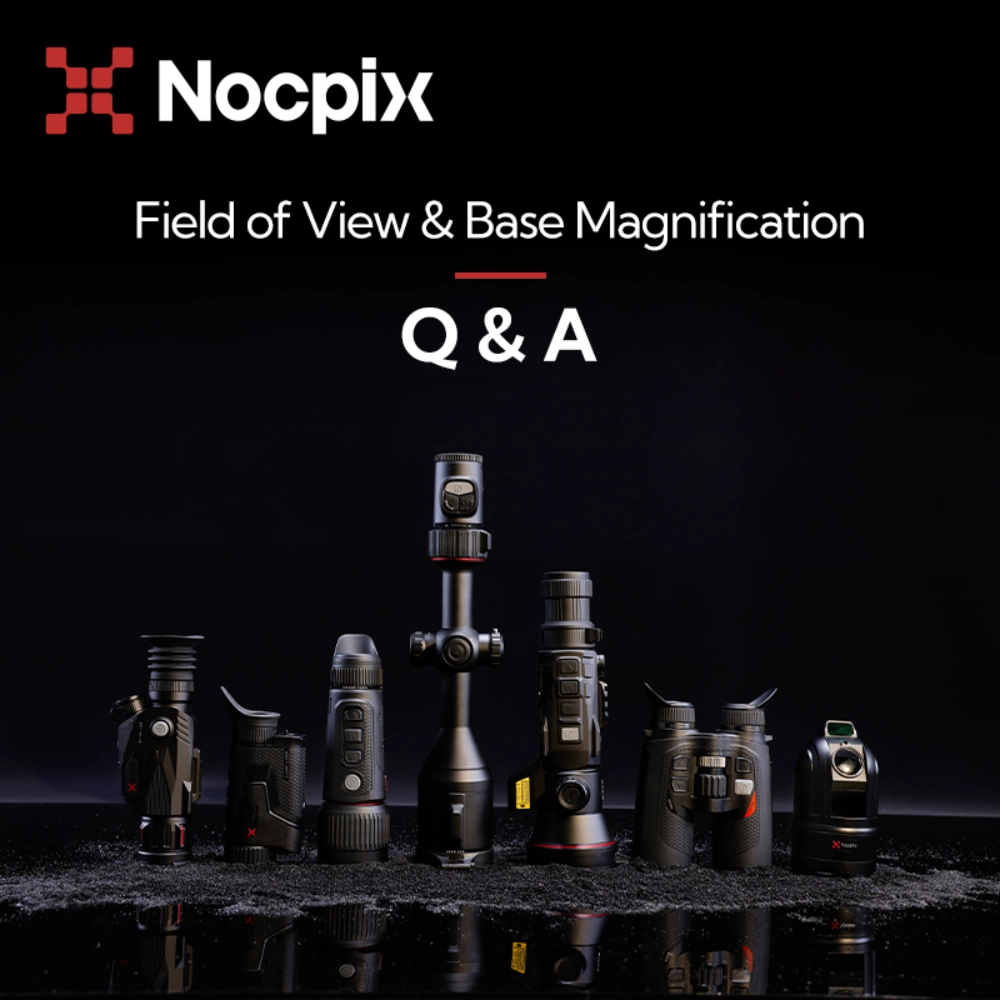
- Base magnification and field of view are independent in thermal imaging devices – Increasing base magnification does not directly lead to a smaller field of view.
- For devices with the same detector and lens configuration, the field of view is fixed – The field of view of other brands’ products will be the same as ours under identical specifications.
- For devices with the same detector and lens configuration, higher base magnification provides a better viewing experience – Just like watching the same video on a larger TV screen, the image appears bigger and more immersive.
- Some thermal imaging devices allow switching to a lower base magnification mode – For example, VISTA series allow users to switch to a lower base magnification mode by reducing the displayed image size, while keeping the field of view unchanged.
In summary, for handheld thermal imaging products, users often focus on the field of view size. However, influenced by conventional optics, some people believe that the field of view of thermal imaging devices is only strongly related to the base magnification, which is incorrect.


